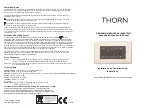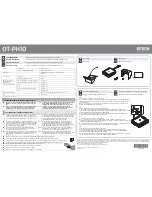
SNMP C
OMMANDS
4-147
Command Usage
• If you do not enter an
snmp-server enable traps
command, no
notifications controlled by this command are sent. In order to configure
this device to send SNMP notifications, you must enter at least one
snmp-server enable traps
command. If you enter the command with
no keywords, both authentication and link-up-down notifications are
enabled. If you enter the command with a keyword, only the notification
type related to that keyword is enabled.
• The
snmp-server enable traps
command is used in conjunction with
the
snmp-server host
command. Use the
snmp-server host
command
to specify which host or hosts receive SNMP notifications. In order to
send notifications, you must configure at least one
snmp-server host
command.
• The authentication, link-up, and link-down traps are legacy notifications,
and therefore when used for SNMP Version 3 hosts, they must be
enabled in conjunction with the corresponding entries in the Notify
View assigned by the
snmp-server group
command (page 4-152).
Example
Related Commands
snmp-server host (4-143)
snmp-server engine-id
This command configures an identification string for the SNMPv3 engine.
Use the
no
form to restore the default.
Syntax
snmp-server engine-id
{
local
|
remote
{
ip-address
}}
engineid-string
no snmp-server engine-id
{
local
|
remote
{
address
}}
•
local
- Specifies the SNMP engine on this switch.
•
remote
- Specifies an SNMP engine on a remote device.
•
ip-address
- The Internet address of the remote device.
•
engineid-string
- String identifying the engine ID.
(Range: 1-26 hexadecimal characters)
Console(config)#snmp-server enable traps link-up-down
Console(config)#
Summary of Contents for 8724ML3 - annexe 1
Page 2: ......
Page 26: ...TABLE OF CONTENTS xxvi ...
Page 64: ...MANAGING SYSTEM FILES 2 18 ...
Page 400: ...CONFIGURING THE SWITCH 3 336 ...
Page 798: ...SOFTWARE SPECIFICATIONS A 6 ...
Page 802: ...TROUBLESHOOTING B 4 ...
Page 812: ...GLOSSARY Glossary 10 ...
Page 818: ...INDEX Index 6 ...
Page 819: ......
















































